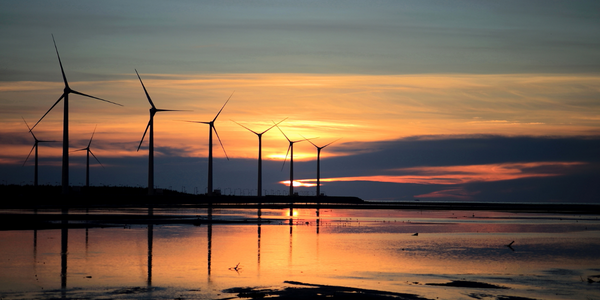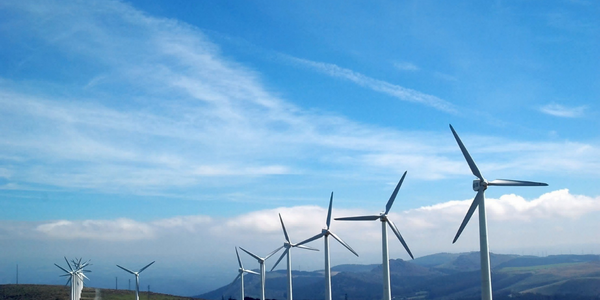Technology Category
- Analytics & Modeling - Digital Twin / Simulation
- Platform as a Service (PaaS) - Application Development Platforms
Applicable Industries
- Equipment & Machinery
- Renewable Energy
Applicable Functions
- Maintenance
- Product Research & Development
Use Cases
- Virtual Prototyping & Product Testing
- Virtual Training
Services
- System Integration
- Training
About The Customer
The customers in this case study are diverse, ranging from marine engineers designing mooring systems, ROV pilots in training, engineers assessing the dynamics of floating tidal energy platforms, to those involved in cable lay operations. These customers operate in complex and challenging marine environments where they need to consider various factors such as line types, environmental loading effects, and the large number of possible layouts. They require sophisticated tools and software to simulate and predict various scenarios to optimize their operations and reduce risks.
The Challenge
The case study presents four distinct challenges faced by different sectors of the marine industry. The first challenge was to design mooring systems, considering the tension in the mooring lines, the movement of the floater, anchor capacity, and interactions of lines with the seabed. The second challenge was to equip ROV pilots training with simulation software and real-time data about structure, cable, and umbilical tensions. The third challenge was to efficiently assess the motion/response of tidal energy platforms in complex wind, wave, current, and loading, and ensure the design is maintainable. The last challenge was to determine the effect of strong tidal currents acting on cable and barge during cable lay operations and determine the operational impacts of having to lay cable after a slack tide.
The Solution
ProteusDS, a dynamic analysis software by DSA, was used to address these challenges. For the mooring analysis, ProteusDS features a cubic-spline lumped mass cable model that is used for modeling mooring lines. The model can be used to simulate a variety of flexible structures. The ProteusDS hydrodynamic modeling capabilities are designed to assess wave, current, and wind loading on floating structures which are coupled with a mooring system. For the ROV pilots training, ProteusDS was integrated with GRI’s VROV to create a 3D interactive real-time simulation software. For the tidal energy platforms, a numerical model was developed to predict the platform motion and loading. Lastly, for the cable lay operations, a numerical model in ProteusDS was developed to simulate the effects of current, wind, and waves on the barge and cable.
Operational Impact
Quantitative Benefit

Case Study missing?
Start adding your own!
Register with your work email and create a new case study profile for your business.
Related Case Studies.

Case Study
Smart Water Filtration Systems
Before working with Ayla Networks, Ozner was already using cloud connectivity to identify and solve water-filtration system malfunctions as well as to monitor filter cartridges for replacements.But, in June 2015, Ozner executives talked with Ayla about how the company might further improve its water systems with IoT technology. They liked what they heard from Ayla, but the executives needed to be sure that Ayla’s Agile IoT Platform provided the security and reliability Ozner required.

Case Study
IoT enabled Fleet Management with MindSphere
In view of growing competition, Gämmerler had a strong need to remain competitive via process optimization, reliability and gentle handling of printed products, even at highest press speeds. In addition, a digitalization initiative also included developing a key differentiation via data-driven services offers.

Case Study
Remote Monitoring & Predictive Maintenance App for a Solar Energy System
The maintenance & tracking of various modules was an overhead for the customer due to the huge labor costs involved. Being an advanced solar solutions provider, they wanted to ensure early detection of issues and provide the best-in-class customer experience. Hence they wanted to automate the whole process.

Case Study
Vestas: Turning Climate into Capital with Big Data
Making wind a reliable source of energy depends greatly on the placement of the wind turbines used to produce electricity. Turbulence is a significant factor as it strains turbine components, making them more likely to fail. Vestas wanted to pinpoint the optimal location for wind turbines to maximize power generation and reduce energy costs.

Case Study
Predictive Maintenance for Industrial Chillers
For global leaders in the industrial chiller manufacturing, reliability of the entire production process is of the utmost importance. Chillers are refrigeration systems that produce ice water to provide cooling for a process or industrial application. One of those leaders sought a way to respond to asset performance issues, even before they occur. The intelligence to guarantee maximum reliability of cooling devices is embedded (pre-alarming). A pre-alarming phase means that the cooling device still works, but symptoms may appear, telling manufacturers that a failure is likely to occur in the near future. Chillers who are not internet connected at that moment, provide little insight in this pre-alarming phase.

Case Study
Siemens Wind Power
Wind provides clean, renewable energy. The core concept is simple: wind turbines spin blades to generate power. However, today's systems are anything but simple. Modern wind turbines have blades that sweep a 120 meter circle, cost more than 1 million dollars and generate multiple megawatts of power. Each turbine may include up to 1,000 sensors and actuators – integrating strain gages, bearing monitors and power conditioning technology. The turbine can control blade speed and power generation by altering the blade pitch and power extraction. Controlling the turbine is a sophisticated job requiring many cooperating processors closing high-speed loops and implementing intelligent monitoring and optimization algorithms. But the real challenge is integrating these turbines so that they work together. A wind farm may include hundreds of turbines. They are often installed in difficult-to-access locations at sea. The farm must implement a fundamentally and truly distributed control system. Like all power systems, the goal of the farm is to match generation to load. A farm with hundreds of turbines must optimize that load by balancing the loading and generation across a wide geography. Wind, of course, is dynamic. Almost every picture of a wind farm shows a calm sea and a setting sun. But things get challenging when a storm goes through the wind farm. In a storm, the control system must decide how to take energy out of gusts to generate constant power. It must intelligently balance load across many turbines. And a critical consideration is the loading and potential damage to a half-billion-dollar installed asset. This is no environment for a slow or undependable control system. Reliability and performance are crucial.







